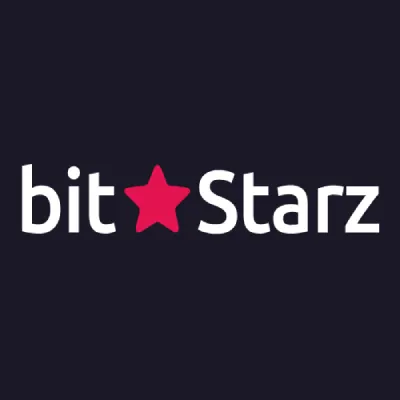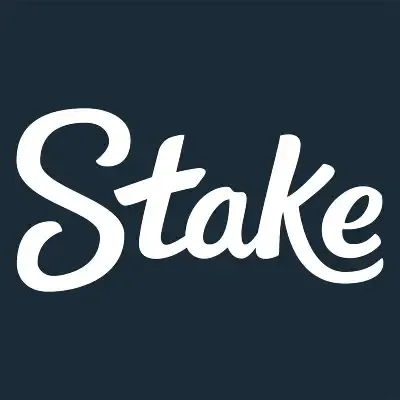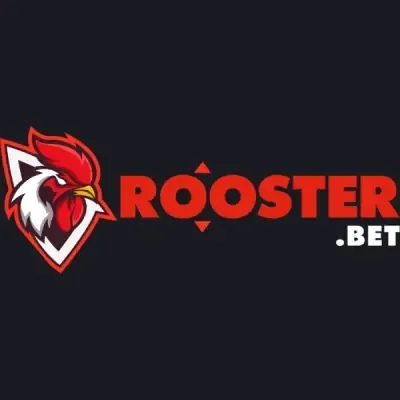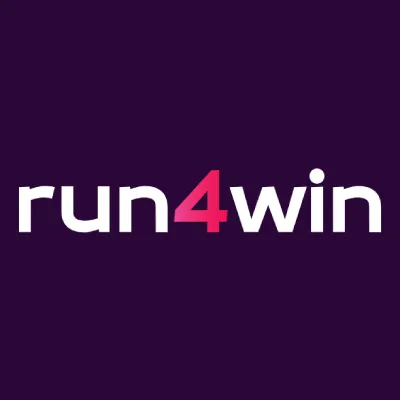
Understanding SEI Blockchain Technology: Features To Know
The blockchain industry has changed many industries thanks to its decentralized transaction and trading feature. That said, blockchain technology is seeing significant changes with new networks emerging to address the limitations of existing platforms. One such innovation is the SEI blockchain. This is a high-performance, Layer 1 blockchain technology specifically designed to optimize trading applications and financial transactions for cryptocurrencies, NFTs, and other tokens.
This platform seeks to change decentralized trading by creating faster transaction finality, superior security, and equitable trading methods beyond the traditional blockchain challenges.
SEI achieves high interoperability through its Cosmos SDK foundation, which enables Inter-Blockchain Communication (IBC) technology for convenient network integration..
Built on the Cosmos SDK and leveraging Inter-Blockchain Communication (IBC), SEI is highly interoperable, allowing seamless integration with other networks. If you are interested in a decentralized platform or are interested in trying new technology, this blog is for you.
In this SEI blockchain roadmap, we will examine SEI blockchain technology and its key features. We will also cover how it compares to other blockchains, which can help you decide which one is ideal for your use and needs.
What is SEI Blockchain?
SEI is a Layer 1 blockchain designed to enhance trading applications. Unlike the pre-existing blockchains, SEI focuses on enhancing speed and security for decentralized exchanges (DEXs). That said, it is not limited to DEXs and is designed to cater to other industries, like NFT marketplaces and financial applications.
It has a few standout features, like Twin-Turbo Consensus, a native order-matching engine, and front-running protection, making it a better solution for decentralized exchanges (DEXs) and other platforms.
Why is SEI Blockchain unique?
SEI differentiates itself by integrating a native order-matching engine within the blockchain layer, offering superior performance for trading platforms. This also means the transactions in this platform cannot be manipulated.
Furthermore, it also integrates Twin-Turbo Consensus, a mechanism that significantly reduces transaction finality times. These features make SEI blockchain one of the fastest and most secure platforms for financial applications.
That said, these features can help make this platform one of the top options for people and exchanges that deal with crypto, Non-Fungible Tokens (NFTs), and other kinds of digital assets.
The Vision Behind SEI Blockchain
Blockchain has been a great innovation for several markets and has laid the foundation for a decentralized platform for transactions. That said, general blockchain technology is not totally free from limitations.
The SEI was developed to address the inefficiencies of existing decentralized trading. This new blockchain technology is known for addressing shortcomings like slow transaction speeds and high fees associated with current options. Likewise, this technology also addresses front-running risks, one of the biggest problems within the market.
SEI aims to become the go-to network for high-frequency trading and institutional DeFi adoption. This is possible as it provides a scalable and low-latency blockchain option.
How SEI Blockchain Works
SEI has brought significant positive changes in blockchain technology. However, it is does not take rocket science to understand it. Here is how it works.
SEI’s Layer 1 Architecture
SEI is a Layer 1 blockchain. This means it operates independently rather than relying on existing blockchain ecosystems. It uses the Cosmos SDK, an open-source toolkit for building multi-asset public Proof-of-Stake (PoS) blockchains.
This technology ensures modularity and flexibility while allowing easy cross-chain interactions via the Inter-Blockchain Communication (IBC) protocol.
This technology ensures modularity and flexibility while allowing easy cross-chain interactions via the Inter-Blockchain Communication (IBC) protocol.
The Role of Cosmos SDK and IBC
SEI’s integration with Cosmos SDK allows developers to build custom applications while leveraging IBC for cross-chain functionality. This enables smooth asset transfers across multiple blockchains. As a result, SEI becomes highly efficient for financial applications. This feature suggests that we might see a huge adoption of SEI on various other blockchain platforms.
For instance, we might also see the use of this technology in something like a crypto faucet, which is a relatively small industry but has the potential to be a big market in the future.
SEI’s Native Order-Matching Engine
Most blockchains rely on external DEXs for trading. However, SEI is different, as it integrates a native order-matching engine. This feature makes it an independent platform and reduces transaction delays. It does all of that while enhancing liquidity. What more can you ask for? Moreover, it also provides a fair trading environment without the risk of frontrunning and transaction manipulation.
SEI Blockchain Features
SEI adoption is increasing significantly, and there is a good reason for it. This technology offers features that have never been seen before in decentralized transactions. So, let us check some of the main features.
1. Twin-Turbo Consensus Mechanism
First and most importantly, we have SEI blockchain staking and Twin-Turbo Consensus, which enhances block propagation and processing. This drastic change in blockchain technology ensures transactions are confirmed in approximately 380 milliseconds, significantly improving transaction finality and making SEI one of the fastest blockchain networks in existence.
In addition, SEI delivers a seamless user experience for traders and financial applications by optimizing block validation and reducing network congestion.
2. Front-running protection and Fair Transaction Ordering
Next, there is the prevention of front-running. Front-running is a major issue affecting a significant number of individuals and exchanges dealing with decentralized asset transactions. It is a process in which malicious and anonymous users manipulate transaction sequences to gain unfair advantages in trading.
SEI blockchain eliminates this issue by implementing fair transaction ordering mechanisms. This helps ensure that transactions are processed transparently and securely, which is especially crucial for decentralized exchanges (DEXs) and financial applications that demand trust and fairness.
3. High-Speed Finality and Low Latency
Transactions on SEI blockchain finalize near immediately because they receive confirmation within milliseconds. Applications in DeFi need low latency because quick-speed processing is vital for services like algorithmic trading and lending alongside staking platforms. The efficient nature of SEI technology decreases operational bottlenecks while boosting the total effectiveness of blockchain-based finance services.
4. Interoperability and Cross-Chain Capabilities
SEI’s support for Inter-Blockchain Communication (IBC) allows seamless asset transfers across different blockchain ecosystems. This feature enhances liquidity, usability, and cross-chain functionality, making SEI a preferred choice for developers looking to build applications that interact with multiple blockchain networks.
SEI’s interoperability ensures a borderless blockchain experience for DeFi, NFTs, or gaming applications and crypto casinos.
SEI Blockchain vs Other Blockchains
There are blockchain platforms which has dominated the market for a long time. However, with the introduction of this technology, there has been a disruptive change in the market where more and more people are leaning towards this new option. So, Let us compare SEI technology with other options available in the market.
SEI vs Ethereum
Ethereum, on the other hand, provides a mature ecosystem with a large variety of decentralized apps (dApps) due to its well-established presence and broad SEI smart contracts features.
As this platform is compatible with the Ethereum Virtual Machine, developers may simply move their current Ethereum dApps to SEI. This can help them enjoy improved SEI blockchain performance without having to start from scratch or learn a new programming environment.
SEI vs. Solana
Next, we have Solana. The Solana blockchain is considered one of the best options in the existing market. It is known for high-speed transactions. Solana is a well-liked option for high-frequency applications because of its reputation for high throughput and cheap transaction costs.
That said, SEI provides better trading fairness and enhanced security against front-running attacks. Moreover, SEI's Twin-Turbo consensus technique boosts speed even more to ensure quicker and more effective transaction processing.
Performance Comparison and Transaction Speeds
-
SEI: 380 ms finality time
-
Ethereum: ~13 seconds per block
-
Solana: ~400 ms per block but faces frequent network outages
SEI’s efficient architecture allows it to handle thousands of transactions per second (TPS) with minimal fees, making it a cost-effective solution for high-frequency trading applications.
Transactions are finalized in approximately 380 milliseconds, ensuring high-speed execution for trading and financial applications.
SEI Blockchain Advantages
-
SEI’s blockchain layer contains an embedded native order-matching engine that improves market liquidity and reduces trade execution delays.
-
The platform maintains MEV attack protection through its transaction ordering system, which establishes equitable trading conditions.
-
The system features high-speed trading capabilities because it operates with low congestion and allows fast processing under intense traffic conditions.
-
The blockchain is designed using Cosmos SDK and IBC functionality. This integration enables users to perform smooth cross-chain transactions between connected networks while making asset transfers.
-
The use of decentralized validator networks combined with cryptographic protocols secures the ecosystem against fraud through decentralized validation.
-
This platform supports DeFi applications, trading activities, and high-volume financial operations at an affordable transaction fees.
-
The system has been developed specifically for DEXs, NFT marketplaces, and DeFi platforms to deliver rapid operations with equitable pricing and minimum costs.
-
The network possesses regulatory adherence while supplying safe, visible and dependable properties as an institutional adoption foundation.
SEI Blockchain Use Cases
The SEI blockchain has been adapted and used in several industries and markets. Moreover, with the rise in popularity and the features that just get better, we cannot help but expect more and more use of this technology in wide markets. That said, here are some of the places where this technology is already being used in a massive scale.
Decentralized Exchanges (DEXs) and Trading Platforms
The Sei Blockchain optimization targets high-frequency trading systems together with decentralized exchanges while providing 300-millisecond speed for transactions. Sei Blockchain uses its primary defense system to prevent traders who want to manipulate market prices from entering without blocking them.
The built-in order-matching system improves market liquidity through efficient trading operations that minimize slipping prices, leading to better overall operational speed. Sei enables DEXs to execute numerous trades rapidly as they preserve both fairness and trading speed.
NFT Marketplaces and Gaming Applications
NFT is a growing industry that demands a better transaction platform. SEI solves these issues. SEI’s low-latency transactions and cross-chain interoperability make it ideal for NFT marketplaces and blockchain-based gaming platforms. The platform's fast transaction speeds enable near-instant minting, listing, and transferring of NFTs, which can play an important role in the NFT market's development.
Moreover, as this platform enables interoperability, users can easily transfer assets across different blockchains. This ensures that NFTs and in-game assets are accessible to users regardless of the platform. This easy integration promotes a smooth and efficient experience for both NFT creators and gamers.
Institutional and DeFi Adoption
SEI is the mainstream platform for Institutional investors and DeFi platforms because of its high scalability performance, alongside security capabilities. This system enables large-scale financial operations, thanks to its high throughput capabilities and robust security measures that provide user protection.
Through its foundation, Sei enables financial institutions to utilize decentralized finance services without sacrificing performance or regulatory compliance standards. The system operates with speed to reduce expenses and boost operational speed in financial environments.
SEI Blockchain Security: How Safe Is It?
SEI blockchain implements superior security functions that guard both its system infrastructure and end-users from cybersecurity risks. CabSecure implements decentralized validator networks combined with cryptographic protocols to deliver secure data integrity and hidden transaction information. The implemented measures protect the SEI blockchain through strong resistance against Sybil and 51% attacks.
Front-running and MEV Protection
SEI employs fair transaction ordering to prevent frontrunning and Miner Extractable Value (MEV) attacks. This ensures that transactions are processed transparently and fairly, eliminating the ability for malicious actors to manipulate trade sequences, making SEI blockchain staking possible.
Regulatory Compliance and Reliability for All uSe
SEI aligns with the industry-standard compliance protocols of the blockchain industry. This ensures the network is secure for both retail and institutional investors. This blockchain platform follows best practices for AML and KYC, enabling institutional adoption.
Additionally, SEI’s high availability and scalability make it a reliable blockchain for all kinds of use cases.
Wallet Compatibility with SEI
The SEI blockchain is designed to work with a variety of current cryptocurrency wallets, even though there isn't an official "SEI Wallet" yet. Users can manage their SEI-based assets using well-known wallets like MetaMask, which supports dApps and Ethereum-compatible tokens.
The wallets have encryption with multi-factor authentication, which guarantees the protection of users' money and provides advanced security features.
SEI functions with hardware wallets that can use the Ethereum blockchain alongside other network protocols.
For individuals seeking a deeper level of integration, hardware wallets that support Ethereum and other blockchain networks can also be used with SEI. This adds an extra degree of security by enabling the offline storage of private keys.
The creation of a specialized wallet might benefit the ecosystem as SEI expands further.
What’s Next for Decentralized Platforms: Future of SEI Blockchain
SEI blockchain innovation is continuously developing with the addition of features and integrations every day. Its roadmap is focused on enhancing scalability and security. Moreover, interoperability is also on the radar when considering this technology. All of the work is being done to maintain its edge in decentralized trading.
Upcoming developments aim to improve network efficiency, reduce transaction costs, and support more advanced trading features. Some of the Key future advancements include but are not limited to:
-
Governance Enhancements: SEI technology plans to establish on-chain management structures as its first initiative. These features will allow the community to participate in making decisions and upgrading protocol components.
-
Smart Contract Upgrades: SEI's smart contract capabilities received additional sophistication for running complex decentralized financial applications and automated trading systems. Due to the current advancements, Many DeFi application integrations may appear in the future.
-
Cross-Chain Expansion: Finally, this technology is helping to strengthen IBC integrations and partnerships with other blockchain networks to boost liquidity and asset compatibility.
Conclusion
SEI blockchain is changing decentralized trading as we know it. So, it is just a matter of time before it becomes the go-to blockchain technology.
SEI ensures a fair and scalable blockchain ecosystem for DEXs, NFT marketplaces, and institutional DeFi applications. This platform can do it all by integrating Twin-Turbo Consensus, frontrunning protection, and a native order-matching engine.
SEI is becoming a pioneer gateway to seamless financial applications across multiple networks with its cross-chain interoperability via Cosmos SDK and IBC.







